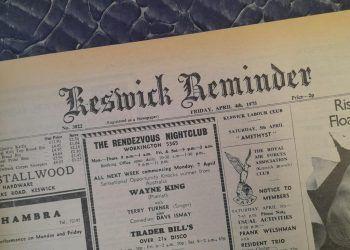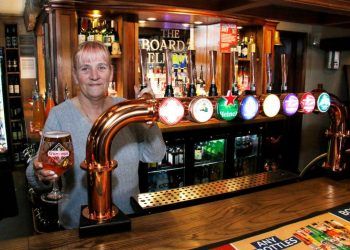
A cut-price Yorkshire-made lookalike for expensive traditional Westmorland ‘green’ slate has been allowed to go on the roof of a Keswick extension – sparking a debate about fake slate in the Lake District.
Keswick Town Council had appealed to national park planners to stand firm on its original planning condition for real Westmorland Green Slate be used on the roof of a one-bedroom annexe extension at Glentarne in Crosthwaite Road, to match the existing roof of the house.
On new developments, the park prefers expensive Westmorland green slate to preserve the Lakeland look of the area, complement traditional buildings and help the Lake District economy, where slate is still mined.
But representatives for property owner, Dr Victoria Wright, applied for permission from the LDNPA to use Grey’s Westmorland Green Slate.
Manufactured by a company in Huddersfield and designed to look like the real thing, it is advertised as 80 per cent cheaper and claims to be a high-quality alternative to Honister or Burlington slate.
It contains 30 per cent pulverised fly ash from coal-fired power stations and has been supplied to the TV series Emmerdale, among others.
Samples of it were made available to the planning committee to examine and feel, with members impressed and remarking on its resemblance to the “real thing”.
The applicants also argued that 10 to 15 per cent of real slate was wasted once it was cut, whereas the alternative could be made to order, with long-standing roofers in Alston supportive of its use.
The applicants also pointed out that nearby properties in Keswick were roofed in slate from Brazil and Spain, or various black concrete tiles from all around the country.
The committee was told that sourcing cheaper, second hand green slate was becoming hard to find and was brittle, and of poor quality, while freshly-mined slate would take 100 years to blend in with the roof of the property.
Planner Kevin Richards told planning committee members: “Despite its name, it’s not slate. It is a glass-fibre, reinforced concrete tile.”
However, because of the small size of the roof and its limited prominence, park planners were okay with the change.
Planning member Judith Derbyshire was not convinced about the fake slate’s green credentials and its lack of contribution to the local economy, but was prepared to “trial it”.
Panel member Jay Sayers said: “If the planning application says local slate then the applicant should make sufficient allowance for the fact that it is more expensive and difficult to get hold of.”
But member Mark Kidd supported the change. He said: “The question is would that be acceptable on that roof in that location? Because it’s not prominent in the landscape, it’s a small roof in an urban area, I don’t think it matters too much what is on the roof.”
Member Hugh Branney said the park’s policy was to go for local slate and Yorkshire was “not local”.
But he said the applicants had been “very honest” and shouldn’t be picked on, but his concern was about policy. “If the conditions are for local slate, then we should be enforcing it.”
Member Tiffany Anderson said the committee had to be pragmatic and she was convinced by the sample.
The panel voted seven in favour of allowing the alternative slate with one abstention.








